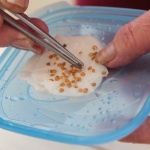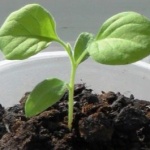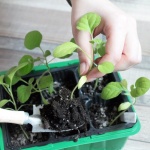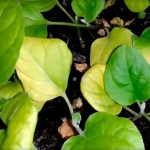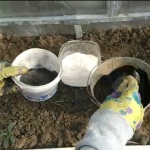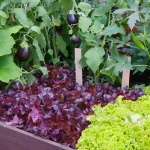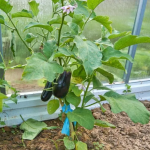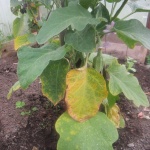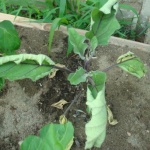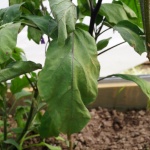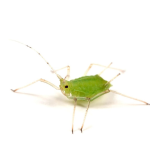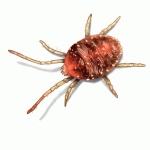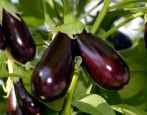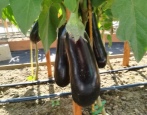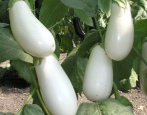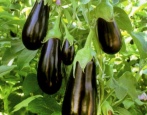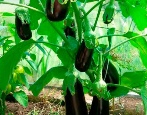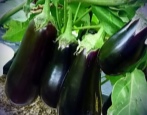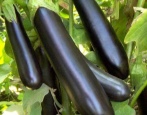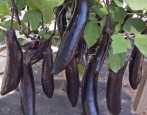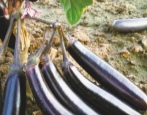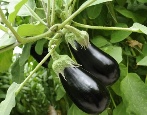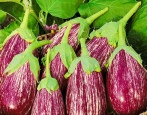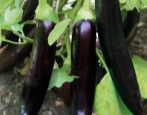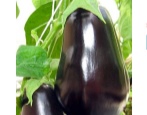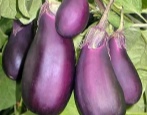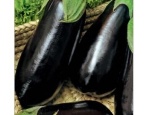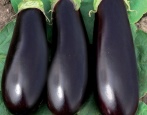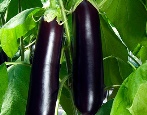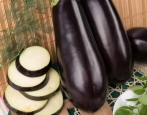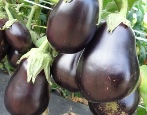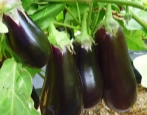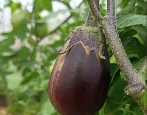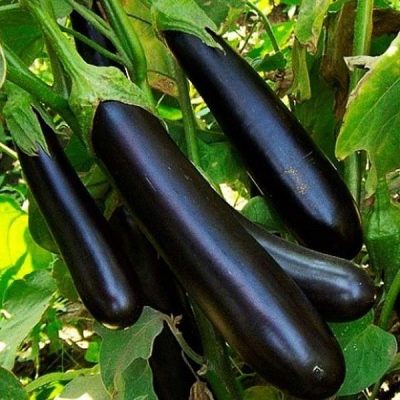
- Authors: Gavrish S.F., Kapustina R.N., Verba V.M.
- Year of approval: 2015
- Growth type: medium-sized
- Bush height, cm: up to 60
- Fruit size: large
- Fruit shape: cylindrical
- Fruit weight, g: 200-250
- Yield: excellent
- Fruit color: dark purple
- Ripening terms: mid-season
Eggplants of the Violet Long variety were bred by S. F. Gavrish, R. N. Kapustina and V. M. Verba less than 10 years ago. But, despite this, since 2015, this variety has been very popular with gardeners. First of all, this is facilitated by the excellent taste of the fruits, their yield and resistance to diseases.
Description of the variety
Purple Long refers to crops that can be grown both in greenhouses and outdoors. It grows equally well in the central regions of Russia, as well as in its northern and Far Eastern regions. A distinctive feature of the variety is the attention-grabbing elongated shape of the fruit. In addition, the Purple Long eggplant has a long shelf life and is very transportable.
Characteristics of the appearance of plants and fruits
Eggplant Violet Long has medium-sized semi-sprawling compact bushes up to 60 cm high. The stem is characterized by an inconspicuous anthocyanin coloration and weak pubescence. The leaves are small, light green, slightly wrinkled with strongly wavy edges. The flowers are similar in shape and color to those of a potato. There are no thorns on the calyx.
The fruits are large, strongly elongated, cylindrical in shape. The length of one eggplant is 20-25 cm, weight - 200-250 g. The color of the fruits is uniform, dark purple, the surface is highly glossy. The flesh is characterized by a greenish-white color.
Purpose and taste
The fruits of this variety have no bitterness in the taste. The pulp is oily in consistency, moderately dense and juicy. The seeds are soft and tender. Good taste makes these eggplants a popular product in home cooking: they are stuffed, baked, rolled, put in soups and side dishes. They are also ideal for various types of preservation for the winter.
Ripening terms
Purple Long is a mid-season variety. Some experts attribute it to early maturing varieties. The period from germination to harvest is 105-125 days.
Yield
The fruits of the Violet Long variety are famous for their excellent yield. It is 8 kg / sq. m under the film shelters. In the open field, about 3 kg of fruit can be harvested from one bush. During storage, the crop does not lose its taste and presentation for a long time.
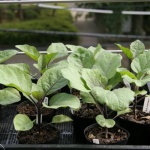
To get a tasty and bountiful eggplant crop, you must first grow strong and healthy seedlings. This culture is considered very capricious, therefore, you need to take care of seedlings when growing at home as correctly and carefully as possible.
Growing and care
Variety Violet Long is not difficult to grow. Seeds for seedlings should be sown at the end of February. The soil should be loose, with a neutral pH, and consist of garden sod, peat and vermicompost. Seeds are placed to a depth of 1-2 cm.Before further transplanting, young plants for hardening are recommended to be taken out to a balcony or terrace, gradually reducing the temperature to +14 degrees and increasing the residence time to 10 hours.
In open ground and in a greenhouse, seedlings are planted at the end of May, the soil is preferable fertile, rich in organic matter, sandy loam or loamy. The plot for the Purple Long variety must be sunny and inaccessible to the winds.
The recommended planting scheme is 40x60 cm, the bushes are watered with exceptionally warm, settled water.When forming a plant, it is imperative to remove all lateral shoots and leaves before the first fork. In open ground, Violet Long should be re-planted in the same place no earlier than after 5 years.
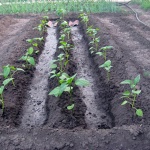
Planting eggplant is one of the most important stages in growing. When choosing a place for eggplants on your site, it is important to remember that this culture should be in warm soil, constantly illuminated by the sun. The plant is also very fond of spacious, open spaces, since its roots can grow over sufficient areas.
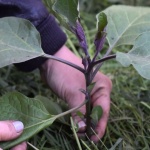
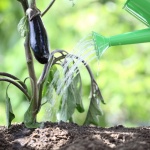
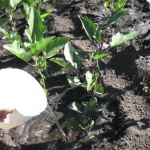
Disease and pest resistance
The Violet Long eggplant variety is resistant to almost all diseases and pests characteristic of this crop. However, it is worth knowing that a prolonged lack of lighting and high temperatures lead to internal necrosis, as a result of which the plant dies.
If the variety grows in a greenhouse, then excessive moisture should be avoided by ensuring good ventilation of the room. These measures are good prevention of diseases such as gray rot and late blight.

Eggplant is one of the most demanding crops. For its successful cultivation, it is necessary to create optimal conditions, as well as to carry out prevention and fight against diseases and pests. Eggplant often infects both fungal and viral diseases. If treatment is not started on time, you can completely lose the crop.
